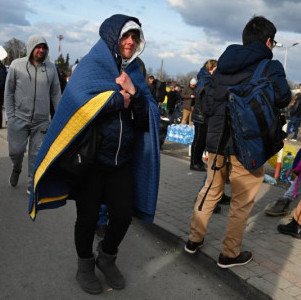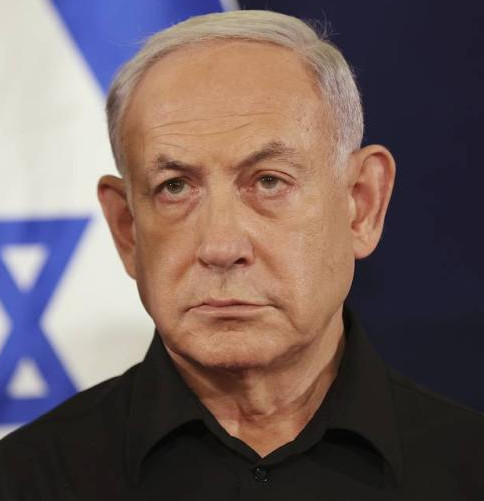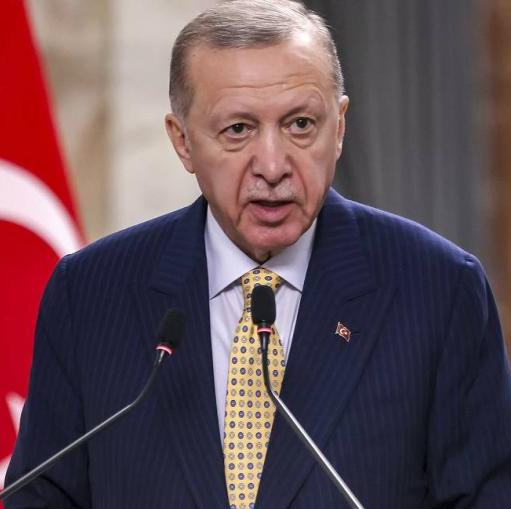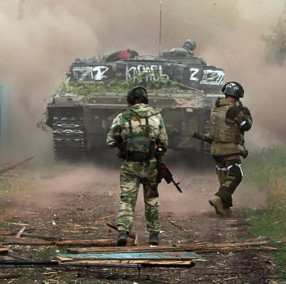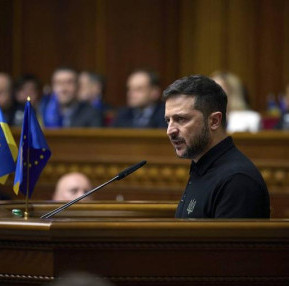As for the media, they now often refer to the past Riga summit as a “demonstration of NATO’s strength at Russia’s border,” because it looked like it. It really did. NATO leaders met in one of the most peaceful regions of Europe, and still, the event involved unheard-of emergency security measures. This could hardly be explained by anything but the proximity of Russia’s border.
On the one hand, it looked like NATO was mistrustful of Russia, was wary and even scared of it, judging by the grand force it had pulled in to defend its heads. On the other hand, the summit could have been used as a pretext to develop new eastern territories, familiarize itself with the local infrastructure AND demonstrate its strength near the Russian border. The ground, sea and air forces drawn in to defend the summit had been impressive indeed.
The control of Riga’s air-space was assigned to the US, Belgian and Spanish airborne troops, each country using four F-16 and Mirage F-1 fighter jets (a total of 12 aircraft). NATO choppers incessantly patrolled the sky over Riga. American and British warships totally blocked the Gulf of Riga to fence off a possible terrorist attack on the NATO venue. The ground forces pulled in for security reasons included even NBC defense units from Germany, Czech Republic, Lithuania and Estonia. Some of them, like the German Bundeswehr battalion, have combat experience they had gained in Iraq.
The law and order in Riga and along the Latvian border was thus ensured by a total of 9,000 Latvian and foreign security troops. Latvia’s capital was turned into a front-line city for a few days: choppers in the sky, shops closed, armored vehicles in the streets – and no people. They had been asked to leave the city if possible, and if not, to refrain from leaving their apartments for a couple of days.
To cut a long story short, Riga did host NATO forces’ maneuvers last month. The maneuvers per se looked much more impressive than the scarce political outcome of the 26 countries’ heads of state and government conference.
At the same time, the Riga summit had clearly shown to the world that the North Atlantic Block is alive and kicking and even adjusting to new realities in a rapidly changing world. Its members’ leaders did maintain a dialog, dominated by George W. Bush (but who else?), president of a great overseas power which had secured its positions in Europe back in the post-WW2 period, and apparently has no plans of surrendering them. That the US pursued an active policy in that region was confirmed by Bush’s visit to Tallinn preceding the Riga Summit. He had promised Estonia and Latvia “assistance” in settling their borderline disputes with Russia – of course, by supporting their claims. In Riga, he obviously tried to remedy his weak image by dictating Washington’s recommendations to the allies. What were they?
The key issue of the summit was Afghanistan. Essentially, the US demanded that the other NATO members replenished their contingents in Afghanistan, allocated more funds for civilian purposes and, most importantly, lifted some of the “caveats” that had limited the participation of their forces in combat operations against the Talibs. They eventually agreed that 26,000 troops of the 32,000 NATO force in Afghanistan should be “more useable,” that is, immediately available in an emergency in any part of Afghanistan to be used in combat in full measure. In addition, the NATO contingent in Afghanistan will be replenished by four US battalions and a Polish one. Bulgaria, Macedonia and the Czech Republic promised to slightly increase their presence in Afghanistan next year. Still, European nations were reluctant to contribute an additional 2,500 force, as America had planned. Germany, Italy and France refused to send additional armed units to reinforce the contingents in southern and eastern Afghanistan. Germany alone allowed moving its forces southward, but only temporarily. Italian Prime Minister Romano Prodi said the 1,900 Italian troops were to stay in the north, which is a far calmer region of Afghanistan; President of France Jacques Chirac refused the French contingent mandates to move outside Kabul.
The US president mentioned no plans to amend US policies in Iraq, as the allies had hoped. He said if there was one thing he was not going to do, it was to pull out of Afghanistan until the United States fulfilled its “mission.”
Officially, the Riga meeting had not been planned as a “NATO expansion summit.” However, the participants discussed expansion-related issues, in both European and global aspects. The US-proposed “global partnership” concept envisages the involvement of Japan, Australia and South Korea in NATO’s future operations, in addition to Sweden and Finland. This is what the Washington-designed NATO “reform” is about. The Riga summit offered Serbia, Bosnia and Montenegro to launch the NATO-integration procedure under the Partnership for Peace Program. Albania, Croatia and Macedonia were promised membership invitations in 2008. Georgia and Ukraine were not left out either. Bush said they would “further support” Georgia’s efforts to become a NATO member. And if Kiev made the required reforms and decided to join NATO, Bush said they would admit Ukraine as well. The US president could not but realize how his statements would annoy Moscow.
In fact Moscow was no less annoyed by the discussion of energy security in Russia’s absence. Russia’s Foreign Minister Sergei Lavrov had warned some time ago that any attempt to settle that issue without Russia would be unproductive. Still, even though Russia was not at all represented at the Riga Summit, the energy issue was brought up, and Moscow was mentioned on multiple occasions in this connection. Moreover, Russia was discussed in terms of force and pressure, which also looked like a good training for NATO. Within the block, the initiative to forcefully ensure energy security of its members is led by Poland. Other East-European nations support it, too, as they consider themselves especially vulnerable due to their high energy dependence on Russia. Meanwhile, West-European countries prefer handling the energy security problem via the EU-Russia channel.
As for the Riga Summit Declaration, it is just a common diplomatic paper describing the alliance’s “fundamental goals” in very general terms. They include security, consultations, defense, settlement of conflicts and partnership.
